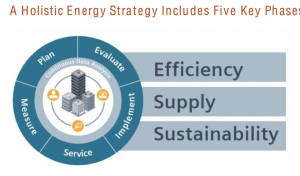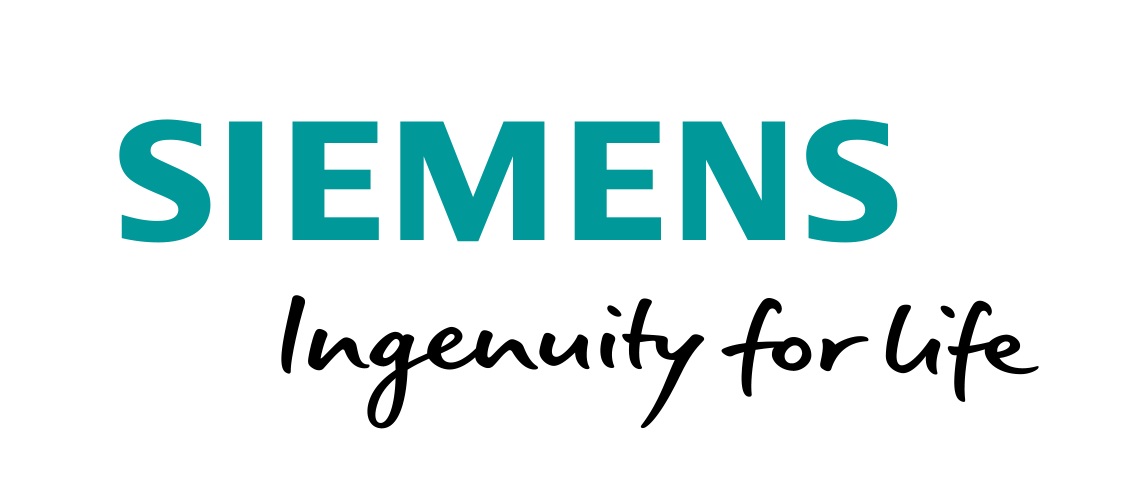A motivational trifecta of environmental sensitivity, practicality and affordability is driving residential consumers and businesses to find ways to utilize more renewables and expand energy management practices, according to Deloitte’s “Resources 2016 Study – Energy Management: Navigating the Headwinds.” The report highlights the increasing influence of millennials aged 21-34, the largest and most dominant consumer group, as a dynamic force behind the shift to cleaner sources of energy – inspired by the desire to reduce their personal carbon footprints.
“The strong desire of residential consumers for clean-energy options, coupled with the increasing cost-effectiveness of solar and wind, are driving growing opportunities for utilities and businesses to explore ways to expand deployment of renewables,” said Marlene Motyka, U.S. alternative energy leader and principal, Deloitte Transactions and Business Analytics LLP. “This trend is really being led by the millennial generation, whose wants and needs are not only relevant, but increasingly an influential factor in the transformation of electricity providers.”
Read the full story. (Deloitte press release)
 For over 165 years, Siemens has built a reputation for delivering leading-edge products and services, high levels of customer satisfaction, and an unending spirit of innovation. As a $100B company with over 370,000 employees in 190 countries, Siemens is a global powerhouse in electronics and electrical engineering, industry, energy, healthcare, infrastructure, and building automation.
For over 165 years, Siemens has built a reputation for delivering leading-edge products and services, high levels of customer satisfaction, and an unending spirit of innovation. As a $100B company with over 370,000 employees in 190 countries, Siemens is a global powerhouse in electronics and electrical engineering, industry, energy, healthcare, infrastructure, and building automation.
From initial assessment through ongoing support, the Building Technologies Division of Siemens Industry, Inc. is the world market leader for safe, reliable, energy-efficient, and sustainable buildings and infrastructures. As a service provider, system integrator, and product manufacturer, Siemens offers sustainable building products, technologies, and solutions that help optimize building automation, fire safety and security systems, HVAC, air quality, power distribution and management, and energy efficiency. Our systems, services, resources, and experience help ensure facilities are safe, efficient, and compliant.
As a true full-service energy services company (ESCO), Siemens provides the industry’s most comprehensive end-to-end energy solutions – from energy reduction to production and procurement – enabling cities to best achieve energy and water goals while positively impacting the economy and environment. Siemens extensive expertise in guaranteed performance-based solutions, combined with our scalable, proven portfolio, allows us to most efficiently and effectively meet the needs of all communities, including small-, medium-, and large-sized cites.
Siemens Commissioning Advantage Program (CxA) is a comprehensive building energy and performance optimization program designed to improve the way facility mangers operate their facilities. This program includes a variety of individual offerings that have a far greater impact when combined as a holistic solution.
 Siemens white paper, “Commissioning: An Essential Part of a Comprehensive Energy Strategy,” talks about how and why Commissioning should be included in a company’s energy plan. Here is an excerpt from that white paper:
Siemens white paper, “Commissioning: An Essential Part of a Comprehensive Energy Strategy,” talks about how and why Commissioning should be included in a company’s energy plan. Here is an excerpt from that white paper:
“Through proper assessment and planning, a comprehensive energy strategy that includes commissioning will serve as a roadmap to maximize building performance. A fragmented approach to commissioning can compromise the long-term health of the building; it is important to integrate commissioning into a facility’s energy management strategy. Depending on the building’s level of energy-efficiency, age, and use, the commissioning approach will be comprised of both one-time initiatives and ongoing services, and both are designed to reduce energy costs while enabling continuous performance improvements.”
A Holistic Energy Strategy Includes Five Key Phases
- Strategy & Planning
- Evaluation & Assessment
- Program Implementation
- Ongoing Services & Optimization
- Measurement & Reporting
Learn more at www.usa.siemens.com/commissioning or contact:
Janet S. Tribble
Siemens Industry, Inc.
Building Technologies Division
Business Development, Building Performance & Sustainability
janet.tribble@siemens.com
804-426-1980
Ernest Moniz, the U.S. Secretary of Energy, came to town to talk about climate change.
He stressed that he had come to the right place.
“When a region is called Tidewater, Virginia, that’s a pretty good indication that there’s a significant risk of global warming and sea level rise,” Moniz said in his keynote address as Sen. Mark Warner’s Virginia Energy Policy Forum, held on Friday at the Hampton Convention Center. “The higher sea level and the warmer waters mean a higher risk of damage done with storms, and we’re already seeing that.
“In Norfolk, the sea level is already fourteen and a half inches higher than in the late 1920s and on its way higher. If this continues, the risk to the region, to our assets, to our Navy’s assets, is enormous.”
Read the full story. (Daily Press)
The Obama administration is moving ahead with an incentive program for its contentious climate change rule, despite the Supreme Court’s action halting the regulation.
Under the program, known as the Clean Energy Incentive Program, the Environmental Protection Agency (EPA) would give states compliance credits for renewable energy and efficiency projects that are undertaken earlier than the Clean Power Plan would require them.
It’s meant to be a carrot to the stick of the Clean Power Plan and to try to get some significant deployment of renewables and efficiency projects before the regulation kicks in in 2022.
“Taking these steps will help cut carbon pollution by encouraging investment in renewable energy and energy efficiency, which will help give our kids and grandkids a healthier and safer future,” Janet McCabe, head of the EPA’s air pollution office, said in a Thursday statement.
The basic details of the incentive program were outlined when the climate rule was made final last August, but Thursday’s announcement formally proposes more details about it.
The climate rule itself, which seeks a 32 percent cut in the power sector’s carbon emissions, is under a judicial stay from the Supreme Court’s February 2016 order.
Read the full story. (The Hill)
The recently released annual Energy Pulse study from Shelton Group suggests that consumers in the market for a new home prioritize energy-efficient features over luxury items.
Eighty-five percent said they’d pay more for an Energy Star-certified home, and their preferences for individual features bore that out: more people wanted Energy Star appliances in their new homes (52%) than wanted a pool (42%), a state-of-the-art sound system (40%), or a home theater room (29%).
Read the full story. (Builder)
WASHINGTON — Building on the new commitments to the Global Lighting Challenge announced last week during the Clean Energy Ministerial, the Energy Department is announcing funding for nine research and development projects that will support solid-state lighting (SSL) core technology research, product development, and manufacturing research and development. The projects will help accelerate the development of high-quality light-emitting diode (LED) and organic light-emitting diode (OLED) lighting products that can significantly reduce energy costs for American families and businesses by using less electricity than products currently in use and ensure that the U.S. remains globally competitive.
“Solid-state lighting research and development has contributed to more than $2.8 billion in U.S. energy cost savings over the past 15 years, and further improvements in the technology will increase those savings even more in the years to come,” said Secretary of Energy Ernest Moniz. “By 2030, solid-state lighting could reduce national lighting electricity use by nearly half—which would equate to the total energy consumed by 24 million American homes today and could save American families and businesses $26 billion annually.”
Read the full story. (DOE)
Late last week, Nest co-founder, design guru and alleged tyrant CEO Tony Fadell announced his departure, amidst a very long-running public airing of his conflicts with former employees, including the founder of webcam acquisition Dropcam.
Besides the personal and personnel problems, Fadell has reportedly been chafing under financial restrictions from Nest’s newly reorganized parent company, Alphabet (aka Google), which apparently wants its $3.2 billion acquisition to start making more money, or stop spending as much.
What does this all mean for Nest’s future in energy efficiency and distributed energy?
That will depend, first, on whether Nest’s new management can create a connected home business strategy that can break open a still-tiny market; and second, whether new CEO Marwan Fawaz decides that energy deserves more attention than Nest has generally given it to date.
Read the full story. (Greentech Media)
FONTANA, Calif. — At first glance, Anthony and Vanessa Genau’s home in a subdivision beneath the San Gabriel Mountains here is like any other gracious new suburban dwelling, with an open-plan living space, granite countertops and stainless steel appliances.
But, along with 19 other cream, taupe and rust stucco houses that cradle the landscaped playgrounds here, it is actually something else: a large-scale testing ground for an energy system of the very near future.
With a combination of rooftop solar panels, smart thermostats, advanced water heaters and other high-efficiency features, the homes are all built with a similar goal: to make at least as much energy as they use over a year.
It’s a concept known as zero net energy, and the cluster of homes here represents one of the nation’s largest experiments to see if zero net energy can be put into wider use.
Read the full story. (New York Times)
‘They don’t want to be a commodity provider any longer’
Utilities have operated more or less the same since the electrification of American cities began more than a century ago. Americans run their lights and appliances, the utility company sends a bill for the electricity consumed and customers send in a check.
But major changes in the energy industry—driven by everything from technological advances to environmental regulation—have uprooted the business model of electric utility companies across the globe. Customers can now create and store their own power thanks to solar panels and batteries, while government incentives encourage utility companies to help customers use less electricity—the very product utilities are selling.
Read the full story. (Time Magazine)
Energy efficiency provides many benefits to the electric utility system. One of these benefits is reducing the market price for electric generation. PJM Interconnection, the operator of the largest electric grid in the United States serving approximately 61 million people, wrapped up its most recent generation capacity auction last week. This auction determines the price paid to power plants three years in the future. The clearing price in last week’s auction was far below expectations and nearly 40% below last year’s clearing price. This is in large part due to new natural gas power plants and energy efficiency.
Approximately 1,515 MW of energy efficiency cleared the auction, the largest amount ever. In terms of total clean energy alternative resources to clear the auction, energy efficiency had the highest amount of capacity, substantially more than solar (335 MW) and wind (969 MW). The complete results can be found here.
The results of this capacity auction are great news for two reasons. First, the result highlights how system planners are utilizing energy efficiency as resource able to provide sustained and predictable energy and reserves. The fact that energy efficiency cleared a substantial amount of megawatts under new requirements called “capacity performance” underscores the confidence of system planners in energy efficiency to reliably meet system load.
Read the full story. (ACEEE)


 For over 165 years,
For over 165 years,  Siemens white paper,
Siemens white paper,